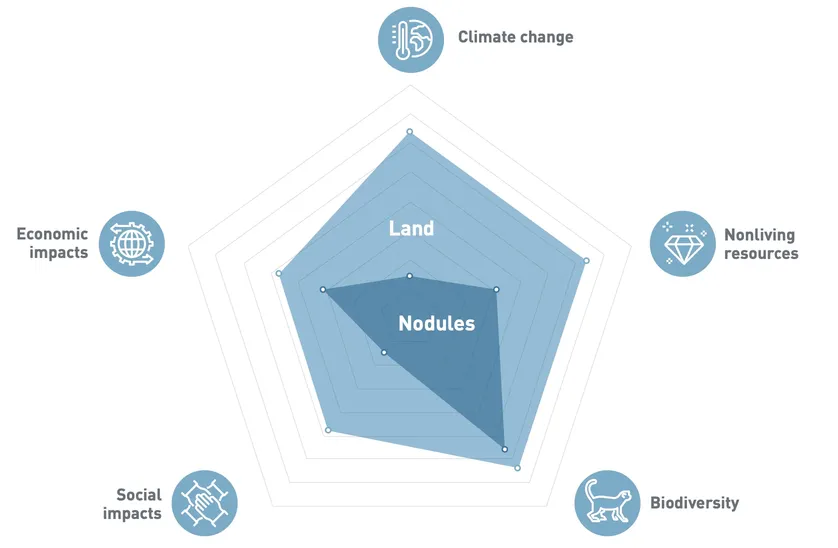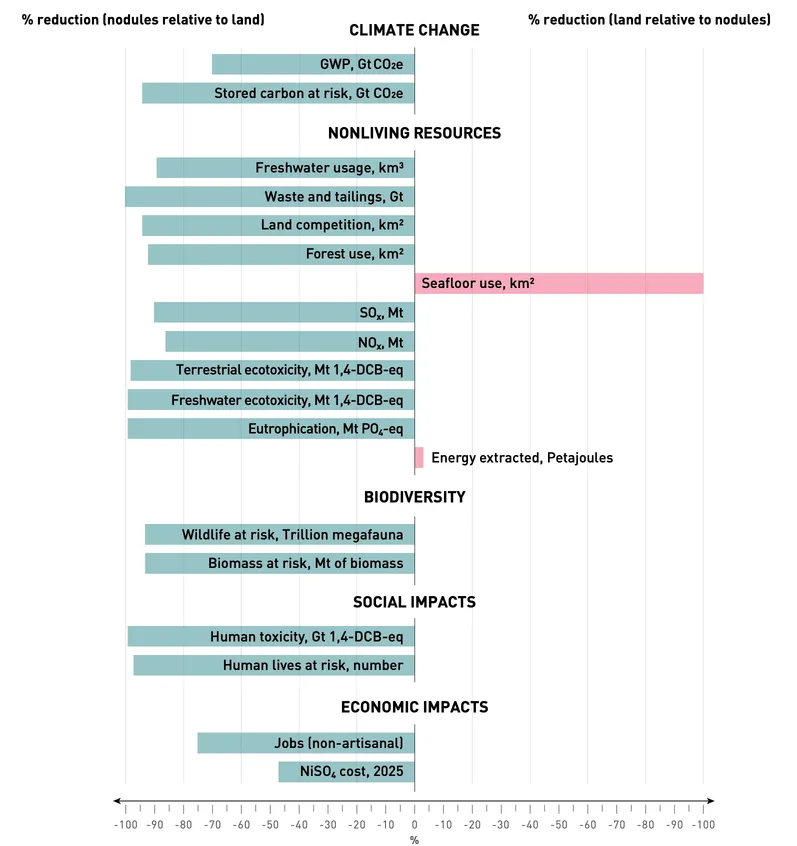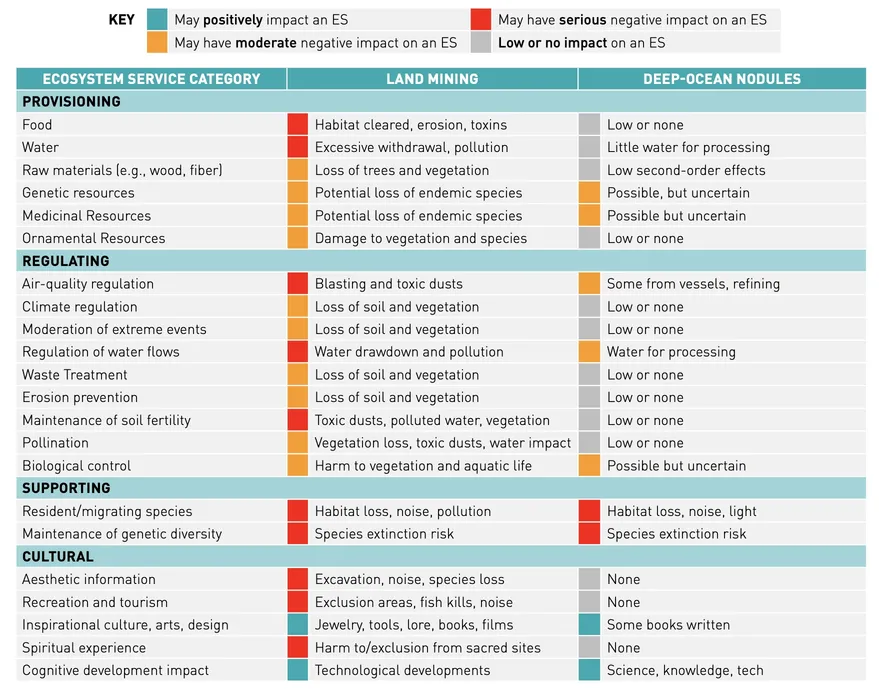Comparing Land and Deep Sea Mining
A discussion of the benefits and challenges of deep sea mining would be incomplete without a comparison of deep sea mining to land mining.
Mining on land also has a host of environmental, social and economic impacts; from displaced communities, to topsoil removal, through to tailings ponds and mine waste. Whilst these factors do not justify significant impact from deep sea mining, they nonetheless provide a comparison.
Summary
According to a white paper funded by DeepGreen Metals Inc (a predecessor to The Metals Company), deep sea mining for polymetallic nodules has a significantly lower impact than land mining in all major categories:

This paper was written Daina Paulikas and Dr. Steven Katona, with input from Erika Ilves, Dr. Greg Stone, Anthony O'Sullivan, and a review from Todd Cort and Cary Kroninsky at Yale. Whilst the industry-funding introduces the potential for bias, it nonetheless provides a comprehensive and thorough comparison.
Relative Comparison in Sub Categories
There are significant differences in impact between land mining and deep sea nodule collection; with far less wildlife and biomass at risk; significantly lower use of freshwater, land and forest; and less impact on humans in terms of CO2 and toxicity. Conversely, deep sea mining uses more energy to operate a Production Support Vessel at sea versus mining equipment on land, and seafloor impact is significantly higher:

These differences seem relatively intuitive. Land mining requires the removal of topsoil, the creation and storage of large volumes of tailings, and the disruption of large areas of habitat.
Deep sea mining works fundamentally differently to land mining, and so it causes virtually none of the impact listed above for land mining. However, it does have significant impact upon the sea and seabed. It is very important to understand this impact, and to understand the flora and fauna affected.
Ecosystem Impact
The exact impact of the various operations on the ecosystem can be further broken down and outlined; making clear the impacts of habitat clearing, toxic dust and soil loss in land mining:

Summary
A thorough study of the relative impacts of land mining versus deep sea mining of polymetallic nodules indicates that the latter has significantly less impact in almost all the categories studied.
Land mining has significant impact around habitat clearing, tailings ponds and freshwater use. Deep sea mining has none of these impacts, but instead has impact on flora and fauna in the sea where deep sea mining occurs. The impact of the latter must be balanced against the former.
Whilst this report indicates that deep sea mining is far less impactful than land mining, it by no means justifies hasty, reckless or poorly regulated deep sea mining operations. Instead, we need to thoroughly understand the impact of deep sea mining on the flora and fauna in the areas mined.
Source Material
The majority of this information comes from the publication "WHERE SHOULD METALS FOR THE GREEN TRANSITION COME FROM?" by Daina Paulikas, Dr. Steven Katona, Erika Ilves, Dr. Greg Stone, Anthony O’Sullivan. The full document is viewable below.